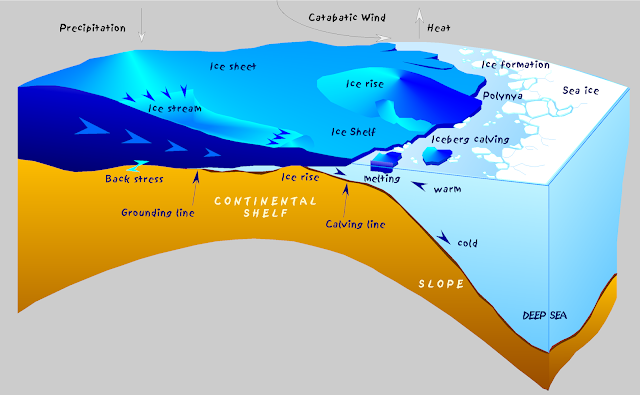Schematic of an ice shelf.
In recent years ice shelves have melted back, largely in response to the warming planet. A number of factors influence their behavior, however. An instance of rapid glacial flow down to the shelf, brought about by greater basal warming or overall loss of stability in the upland glacier, will cause the shelf to extend farther out into the sea. The greater extent of ice farther into deeper, usually warmer waters will lead to a large calving event. Warming sea water will have a similar effect, even without the initial surge from the shelf.
Median extent of the Antarctic ice shelf.
Glaciers as a system act to remain in balance with their
surrounding environment. Structural instability and higher temperatures lead to
meltback, calving and mass loss. Lower temperatures lead either to stability or
mass gain, depending on snow patterns (some theories hold that warming over
Antarctica will gain glacial ice mass in some regions because the slightly
warmed air will allow more snow to fall).
Global tidal ranges.
Tomorrow: tundra and permafrost.
Be well!









No comments:
Post a Comment